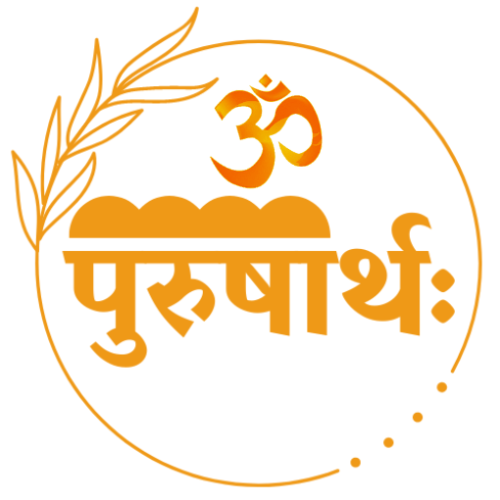Sanatan Dharma, often referred to as Hinduism, is an ancient and diverse religious and philosophical tradition that encompasses a rich tapestry of beliefs, practices, and teachings. At the core of Sanatan Dharma lies the concept of Purushartha, a profound framework that guides individuals on their path towards a meaningful and fulfilling life. The Purushartha system encompasses four fundamental aims, each representing a distinct facet of human existence. Let us delve deeper into this timeless system that has guided generations and continues to offer wisdom and purpose to seekers.
Dharma: The Path of Righteousness Dharma, the first and foundational aim of life, represents the pursuit of righteousness, moral values, and ethical conduct. It encompasses the fulfillment of one’s duties, responsibilities, and obligations towards oneself, family, society, and the entire cosmos. Dharma is the moral compass that guides individuals to make virtuous choices, maintain harmony, and contribute positively to the world. It encourages individuals to act with integrity, compassion, and selflessness, recognizing the inter-connectedness of all beings.
Artha: The Pursuit of Material Well-being Artha signifies the pursuit of material prosperity, wealth, and security. It encompasses the endeavor to fulfill one’s legitimate desires and attain financial stability. Artha encourages individuals to strive for success in their chosen professions, acquire knowledge and skills, and engage in economic activities that are ethical and sustainable. However, it emphasizes that material pursuits should be balanced, ethical, and aligned with the principles of dharma, ensuring that wealth is not amassed at the expense of others’ well-being.
Kama: The Realm of Sensual and Emotional Pleasure Kama refers to the pursuit of aesthetic, sensual, and emotional fulfillment. It recognizes the importance of experiencing love, joy, beauty, and pleasure in life. Kama encourages individuals to develop meaningful relationships, express emotions, appreciate art, music, and literature, and indulge in activities that bring them happiness and satisfaction. However, it emphasizes the need to approach desires and pleasures with moderation, discipline, and respect for oneself and others, ensuring that they do not become the sole focus of life.
Moksha: The Ultimate Liberation Moksha represents the highest aim of human life, transcending the cycle of birth and death, and attaining spiritual liberation. It involves the realization of one’s true nature, union with the divine, and the cessation of the individual ego. Moksha is pursued through various paths, such as Jnana (knowledge), Bhakti (devotion), Karma (selfless action), and Yoga (union with the divine). It is the culmination of a spiritual journey where one attains self-realization, liberation from suffering, and experiences eternal bliss.
The Interplay of Purushartha: The four Purusharthas are not seen as separate or conflicting aims but as interconnected and interdependent facets of human life. They form a holistic system that encourages individuals to lead a well-rounded and balanced life, acknowledging and fulfilling various dimensions of their existence. Each aim informs and influences the others, creating a harmonious and purposeful life journey.
The Purushartha system provides individuals with a comprehensive roadmap for leading a meaningful and purpose-driven life. It reminds us of the inherent value of righteousness, the pursuit of material well-being, the experience of pleasure, and the ultimate quest for spiritual liberation. By aligning our actions with the principles of dharma, striving for balanced material and emotional growth, and nurturing our spiritual essence, we can attain harmony, fulfillment, and a deeper understanding of our place in the universe. The Purushartha system continues to be a timeless guide, offering wisdom and insights for seekers on the path of Sanatan Dharma.


Leave a Reply